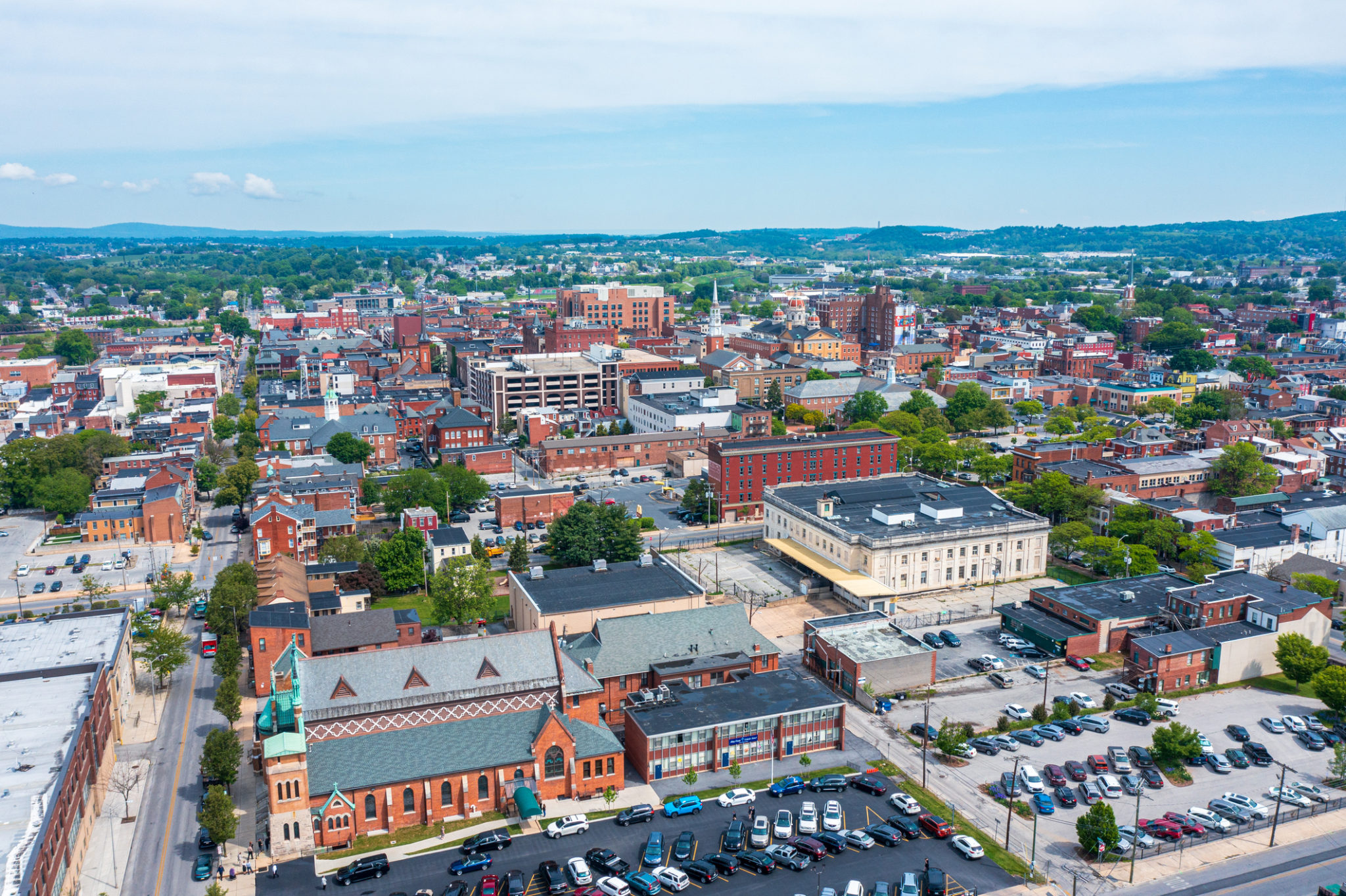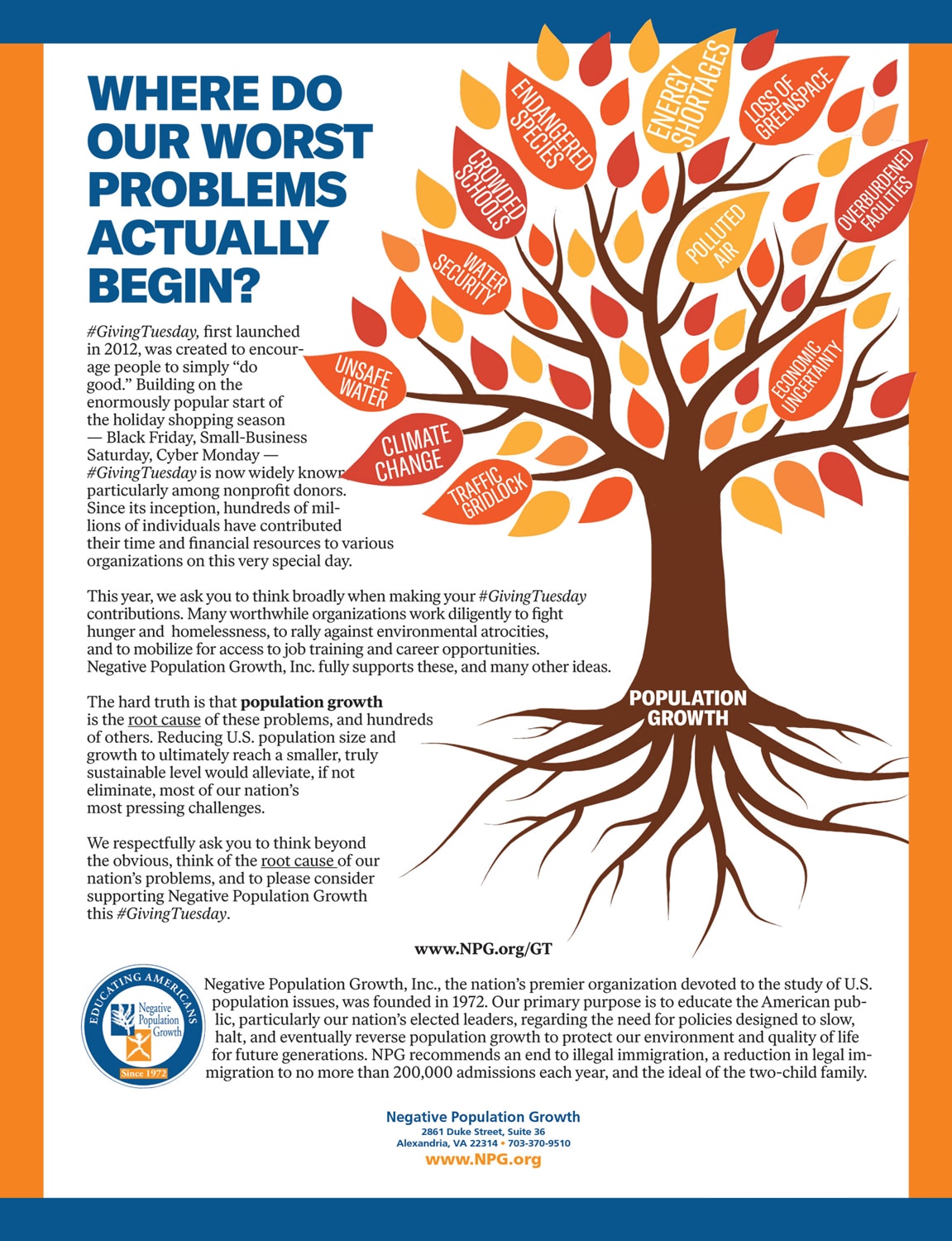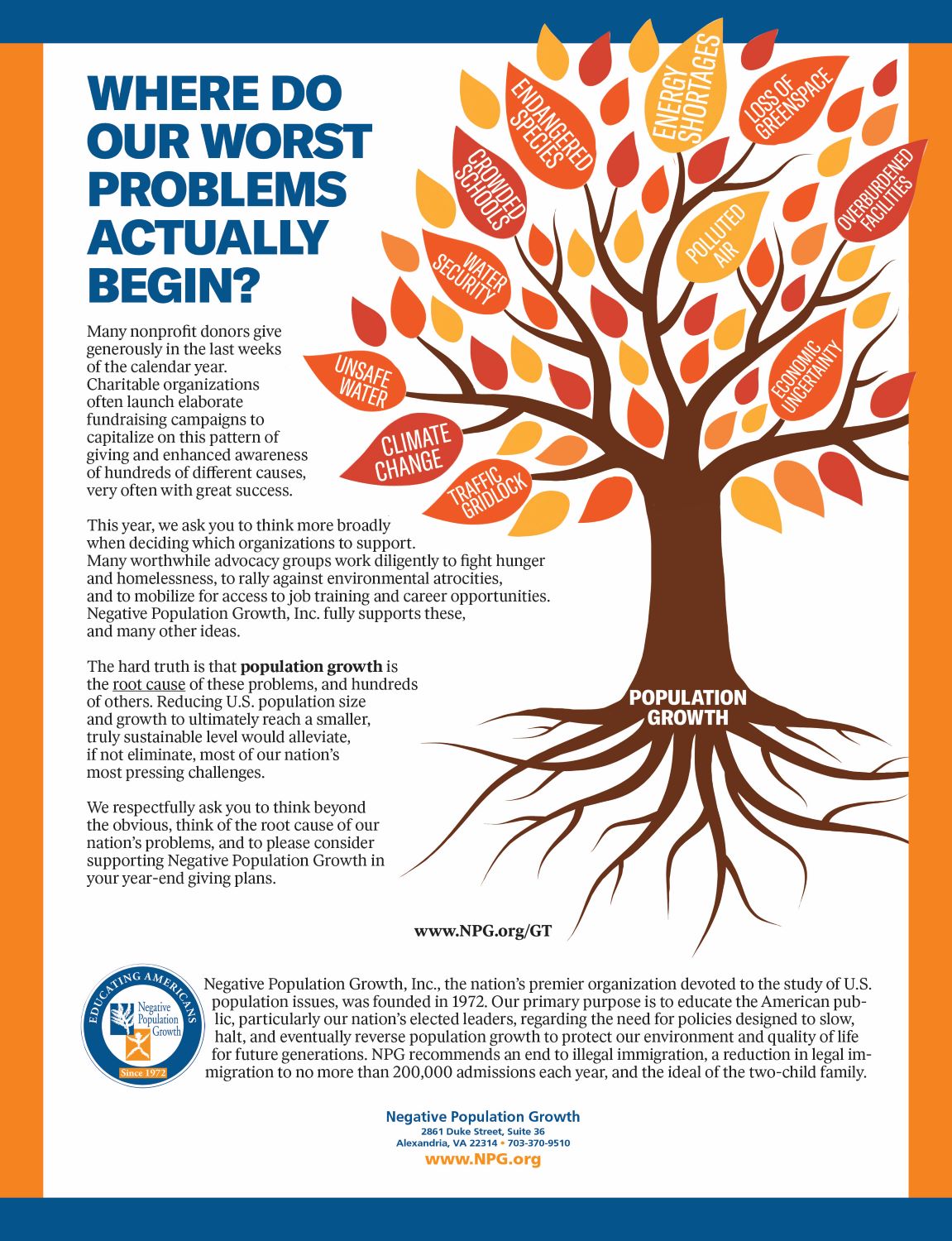
Spoiler Alert: ‘Smart Growth’ Won’t Save the Day
- Mark Cromer
- November 30, 2023
- Forum Papers
- Forum Paper
- 0 Comments
Click here for a downloadable, printable PDF version.
The United States is on course to reach more than 400 million people by mid-century. That’s not sustainable, to put it mildly.
An NPG Forum Paper
by Mark Cromer
November 2023
[Abstract: With more than 8 billion people now crowding a planet that continues to convulse with the conflict and corruption that drives mass migrations, the United States confronts its own steadily escalating population growth and the challenges it presents in both the short-term and over the long haul. Building blitzes, infrastructure expansions and zoning schematics designed to jack up population densities along with ever-increasing restrictions on resource consumption will not prove to be the panacea to population growth. If the demographic shockwaves that have left the population centers of the Global South (most of Africa, Latin America, and parts of Asia) in chronic states of decay and despair are warning lights on our domestic policy dashboard, they signal that the U.S. must develop a coherent and consistent national policy to reign in and reduce population growth before it’s too late.]
It may seem hard to believe as this first quarter of the 21st Century draws closer to its end, but once upon a time in Southern California open space was abundant and not just in its wild land of mountains, foothills and expansive deserts. For much of the last quarter of the 20th Century, open and often green space was still a prominent feature throughout the Southland’s suburban sprawl that radiated out from the urban cores of Los Angeles and San Diego and across the sweep of Orange County’s bedroom communities.
The region’s rich agrarian history was still very present in the farmland surrounding Ventura and Oxnard to the citrus groves that still could be glimpsed in the Pomona Valley and the ripe vineyards of Fallbrook and Temecula. If one took a sail out of Newport Beach down the coast to Dana Point, the coastal hillsides were still largely undeveloped.
In many places, ‘City Limits’ still meant open space ahead.
According to the Census, in 1980 California’s population had crested past 23.6 million people, a nearly 19% increase from 1970’s headcount, with the bulk of that growth anchored in the state’s south, but even still its arterials of asphalt remained largely freeflowing and freeways still had ‘rush hours’ that were mostly confined between 8 a.m. and 9 a.m. and 5 p.m. (and most of it courtesy of Hollywood and the music industry) surrounding the freewheeling 1970s and the gluttonous days of the Go-Go 1980s in California, there was still a semblance of harmony between residents and the environment in that era.
Central to that harmony was a sense of breathing room.
Forty-three years and 16 million more people later, and all the development required to accommodate them, well, as native Californians who are over 40 and still living in the Golden State are willing to attest: those were the days.
In the twilight of 2023, the impacts of California’s long metastasizing population growth are unmistakable and can be seen and felt across most facets of everyday life; from region-wide traffic that now slows and jams from before dawn to well after dusk to green spaces gone the way of the Gray Wolf, from ever-increasing resource restrictions to the incessant rise of noise pollution. The unfolding crisis of tens of thousands of homeless people crowded into encampments that can be found along the streets and parking lots and across public parks and civic plazas has a direct throughline to competition for affordable housing that is miniscule in the face of demand….Continue reading the full Forum paper by clicking here.
Your gift helps publish and distribute materials like this.
Mark Cromer is a professional writer and researcher with more than three decades as a working journalist and an investigator in the field of business intelligence. His work on mass immigration and population growth issues has been published in major newspapers across the nation and internationally. Cromer was a senior staff investigator at Sapient Investigations, Inc., for more than a decade and he worked as a contract investigator for Kroll Associates, the global blue chip risk consulting and investigations firm.


